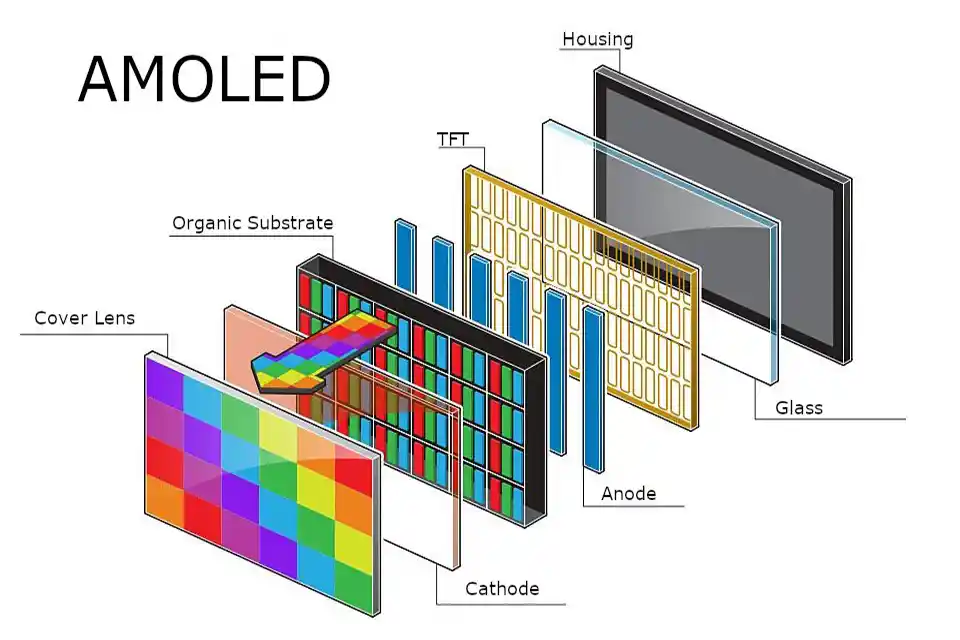AMOLED (Active Matrix Organic Light Emitting Diode) is a cutting-edge display technology widely used in modern smartphones, tablets, and televisions. It has gained popularity due to its superior image quality, energy efficiency, and flexibility compared to traditional LCD screens.
How AMOLED Works
AMOLED screens consist of organic compounds that emit light when an electric current passes through them. Unlike LCDs, which require a backlight, AMOLED displays produce their own light at the pixel level. This allows for true blacks, as individual pixels can be turned off completely, resulting in infinite contrast ratios and vibrant colors.
Advantages of AMOLED Technology
- Superior Image Quality – AMOLED displays offer richer colors, deeper blacks, and higher contrast ratios compared to LCD screens.
- Energy Efficiency – Since AMOLED does not require a backlight, it consumes less power, especially when displaying dark themes or black backgrounds.
- Faster Response Time – AMOLED screens have a faster refresh rate, making them ideal for gaming and high-speed applications.
- Flexibility – Due to its organic material composition, AMOLED technology allows for the creation of flexible and foldable displays, as seen in modern foldable smartphones.
- Thinner and Lighter Design – Without the need for an additional backlight, AMOLED panels are thinner and lighter, contributing to sleek and modern device designs.
Disadvantages of AMOLED Technology
- Burn-in Issues – Prolonged static images can cause screen burn-in, where certain pixels degrade unevenly, leaving a ghost image.
- Higher Production Costs – AMOLED displays are more expensive to manufacture than LCDs, affecting the overall cost of devices.
- Shorter Lifespan – Organic materials used in AMOLED panels degrade over time, leading to reduced brightness and color accuracy.
Applications of AMOLED Technology
AMOLED technology is widely used in:
- Smartphones (Samsung Galaxy, iPhones, and other flagship devices)
- Tablets and Laptops
- Smartwatches
- Televisions
- Augmented Reality (AR) and Virtual Reality (VR) devices
The Future of AMOLED
As technology advances, manufacturers are working on improving the durability and efficiency of AMOLED displays. Innovations like MicroLED and Quantum Dot OLED (QD-OLED) are emerging, promising even better brightness, color accuracy, and lifespan.
AMOLED technology continues to evolve, shaping the future of display screens with its stunning visuals and energy-saving benefits. With ongoing improvements, it is expected to dominate the display market in the years to come.










